+30 Easy Houseplants for Beginners

Not over-watering, not under-watering, providing the right humidity, watching for harsh sunlight, protecting from cold breezes, fertilizing with the right amount at the right time, potting and re-potting, trimming, cleaning, the list goes on! The fact is that good house plants require good care. However, you do not have to go for species that even challenge experienced gardeners.
To start your gardening journey and create your own collection, or simply add a dash of green to your space, easy indoor plants are excellent choices. And do not let the term ‘easy’ make you think that these are boring greenery with pale foliage. We have prepared a list of +30 plants for beginners that include some of the most eye-catching and exotic indoor houseplants.
Pothos (Epipremnum aureum)
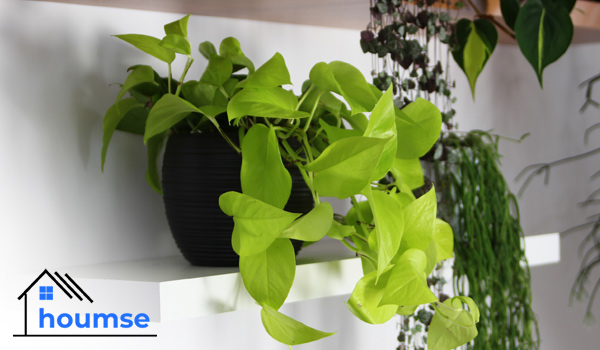
Pothos is the right choice even for the most careless with plants. It tolerates low light and only needs watering when the potting mix dries up. For this reason, they are usually laced in bathrooms, but the ideal location to locate these easy indoor plants is on top of tall furniture and shelves since their branches become pendants when they grow.
Cordyline (Cordyline terminalis)
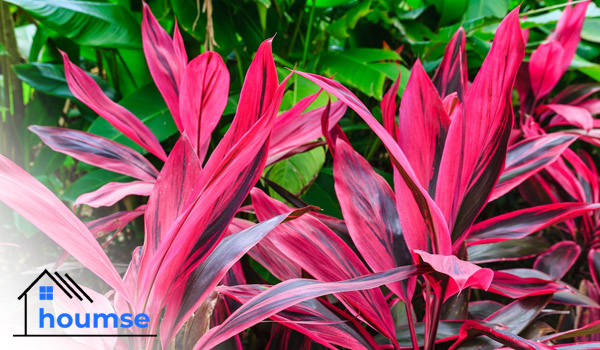
This colorful variety is one of the good house plants that offers every new gardener’s dream: it is super decorative and, at the same time, needs minimal attention. It survives in high temperatures and does not need too much light.
In fact, it is better to grow it in indirect light so that it does not lose its charming pink foliage. So, it is perfect for halls or corridors, and you will only have to water it once or twice a week when the soil is dry.
Peace Lily (Spathiphyllum)
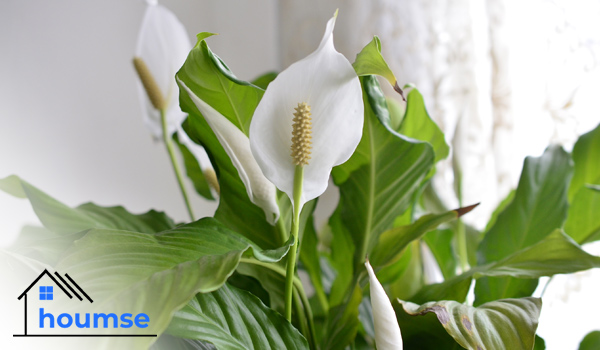
This is one of the flowering houseplants for beginners that purifies the air and exudes elegance. The peace lily is one of the few options that, being indoors, is capable of blooming throughout the year. It adapts to different temperatures and to different levels of light and humidity and usually requires watering once a week.
Mother-In-Law’s Tongue (Dracaena trifasciata)

The Sansevieria zeylanica also known as Mother-in-Law’s Tongue and Snake Plant is known for its elongated shape and its bicolor sword-shaped leaves. A plant that is always present in any kind of list about good house plants!
It is incredibly easy to care for this immortal plant as shade suits it and it needs little watering: once every two weeks, putting a plate of water under its pot will suffice. You can place it almost everywhere, but bedrooms are especially recommended as the Snake Plant not only decorates but also releases oxygen at night and purifies the environment.
Jade Plant (Crassula ovata)
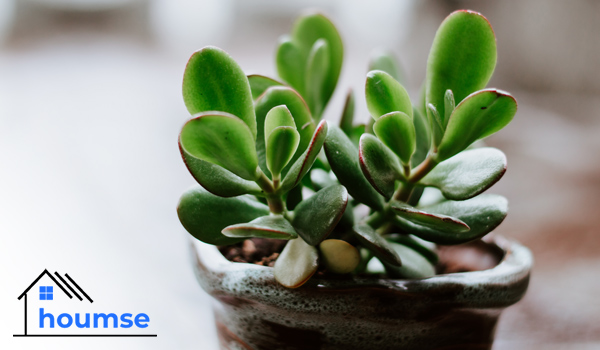
Without a doubt, Crassula ovata is one of the most resistant plants for beginners. It is one of the best-known succulents in the world, with its fleshy leaves and its small-tree shape. It tolerates drought very well to drought and needs little watering. If you are looking for tall houseplants for beginners, consider the jade plant as it can grow up to 3 to 6 feet.
Red Anthurium (Anthurium andraeanum)
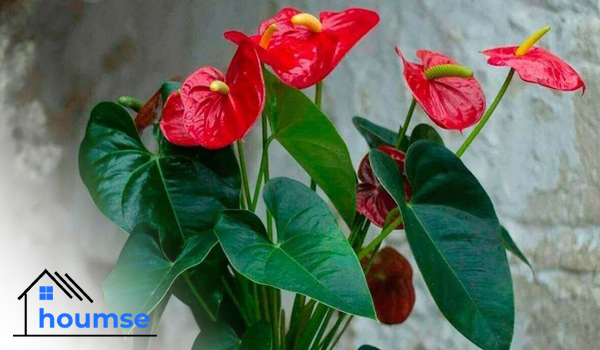
Also known as Laceleaf, this species captures the eyes of those who prefer good house plants with bold blooms. Laceleaf is a neotropical flowering plant that is able to handle various temperatures and conditions. Of course, it is better to grow these easy indoor plants in moist potting soil and close to a window without the foliage receiving direct light so that their bright red color does not pale.
Fiddle Leaf Fig (Ficus lyrata)
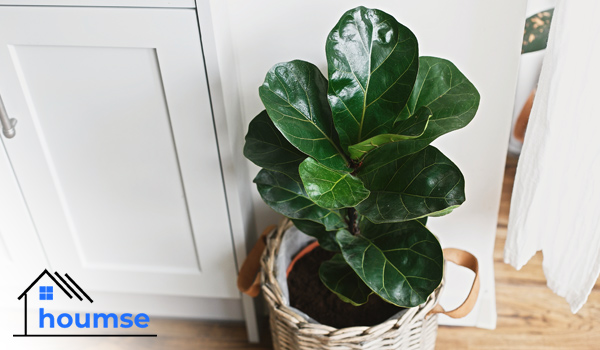
The timeless eternal Fiddle Leaf Fig is one of the highly recognized and appreciated indoor plants for beginners, especially for spacious rooms. Compared to other good house plants so far, this one needs slightly more attention.
For example, it is better to keep it away from radiators, drafts, and low temperatures (never below 55 ºF). It prefers indirect light and water a couple of times a week, only when you notice the soil is dried out.
Adam’s Rib (Monstera deliciosa)
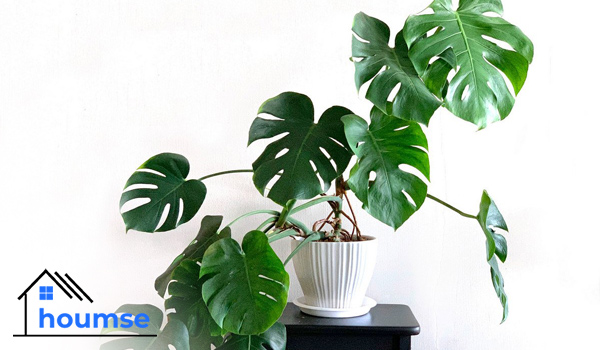
The iconic Monstera is famous for its large, pierced tropical-looking leaves. Adam’s Rib is a fine specie for beginners; however, one should keep in mind that it can grow a lot. As it is native to humid environments, it is recommended to spray its leaves from time to time and water it once a week.
In case you do not want to limit yourself to easy indoor plants, this may be the right choice as it likes both indoors and outdoors. Just remember that the temperature should be between 50 ºF and 75 ºF.
Aloe vera
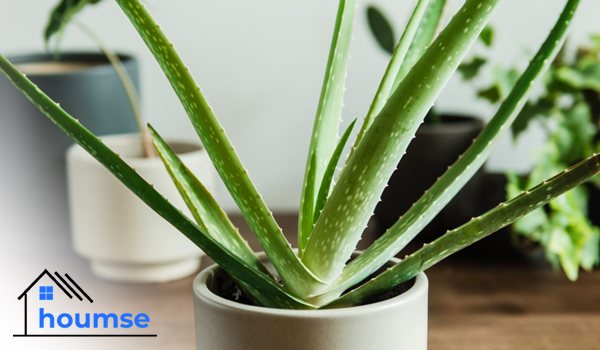
Aloe vera is super easy to care for. Nevertheless, it is a desert plant. Therefore, it survives the heat of interior spaces very well. It is advised to provide it with light whenever possible and water every 15 or 20 days with little water.
In addition to its convenient care and showy nature, its leaves can be used for therapeutic and beauty purposes. A bonus that other good house plants lack!
Christmas Cactus (Schlumbergera)
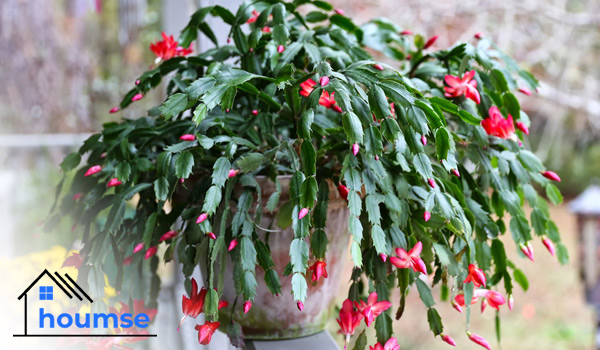
A lot of succulents are considered easy indoor plants for beginners but only a few are as gorgeous as Christmas cactus. This beautiful specie features evergreen leaves and lovely blooms that appear in the winter. It is beautiful all year round and will hold up in any space.
Just be careful about direct sunlight and underwatering. It may be a cactus, but do not forget to water it once a week (without wetting the leaves) and let it absorb the water from the plate. It is ideal for indoors because, although it can withstand cold temperatures, it will only flower in temperatures between 68 ºF and 77 ºF.
Elephant’s Foot (Yucca elephantipes)
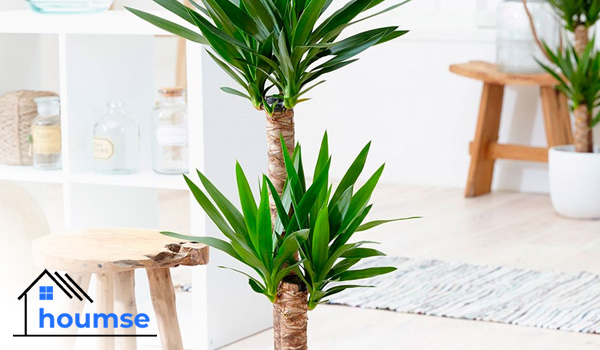
The elephant’s foot is a tropical plant, perfect for beginners in gardening, as it is very resistant and requires little attention. In fact, like a few other good house plants, it can even survive periods of total abandonment. The most characteristic feature is its stem, which resembles an elephant’s foot, hence its name. In addition, its slender size makes it ideal for decorating any corner of the house.
Place it next to a window where it receives a lot of light (even with direct light), keep the temperatures above 65 ºF, avoid over-watering, and ensure proper drainage and the Yucca elephantipes will be happy and grateful.
Lucky Bamboo (Dracaena Sanderiana)
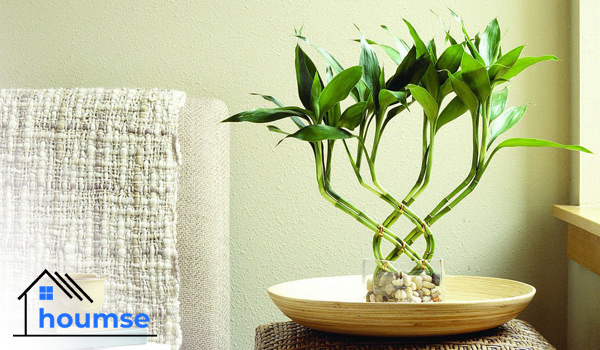
Lucky Bamboo belongs to the Dracena family and gets its name from its elongated stems, which resemble that of bamboo. In fact, its stem can measure between 4 inches and 3 feet with nodes from which the shoots appear.
Among various good house plants, the lucky bamboo is mostly characterized by its rapid growth and great resistance. Although it is common to grow it in water, the ideal way is planting in a suitable, rich potting mix, where they thrive much better. These easy indoor plants love bright places with indirect sunlight and temperatures around 32 ºF, although they can handle lower temperatures too.
Umbrella Plant (Schefflera)
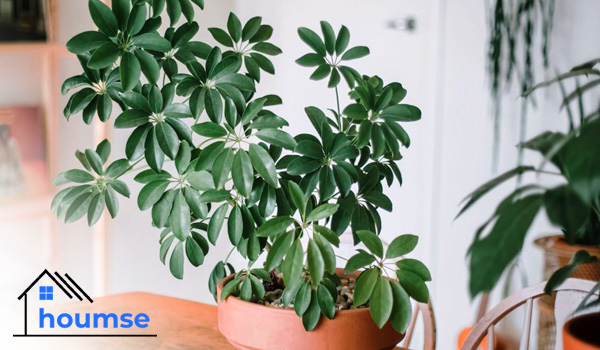
As an incredibly decorative species, Schefflera has surprisingly convenient care. It is one of the good house plants mainly due to its low water requirements. This tropical plant also purifies the air, which makes it perfect for both home and the office. It is interesting to know that the leafy Umbrella Plant favors pruning by showing new shoots. You can find it in multiple shapes and sizes, all with the same care!
Place it in a bright room, where it can receive direct sunlight during the winter. And when it is hot, locate it in a spot without direct light. The temperatures between 59 ºF and 77 ºF and some ambient humidity are recommended for this plant. And to avoid common problems, simply avoid over-watering.
ZZ Plant (Zamioculca zamiifolia)
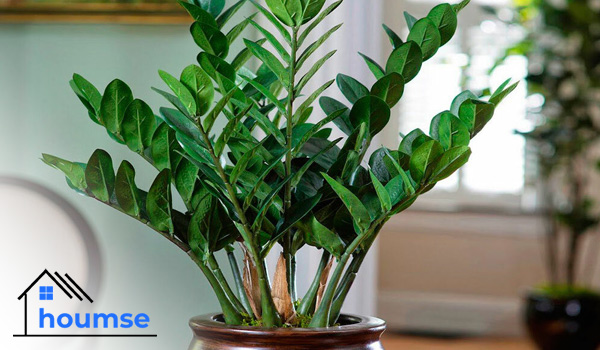
According to Feng Shui, including a Zamioculca zamiifolia in your home’s decoration will help you achieve a more positive and emotionally healthy space. You will be the judge of that, but we can assure you that this is one of the good house plants with a slender size and elegant look that, in addition, is very resistant and easy to care for.
Native to Africa, it belongs to the succulent family and can store water both in its leaves and in its roots. So, it will be fine if you occasionally forget to give it love and attention. ZZ Plant adapts well to low light conditions, even to artificial light. But if you want it to thrive strongly, place it in a bright room with a temperature between 59 ºF and 86 ºF. In fact, it withstands hot conditions better than cold.
Being a succulent plant, like several other easy indoor plants, it does not need a lot of water. Finally, we suggest transplanting it every two years (in the spring) since its root system grows quickly and soon will run out of space.
Parlor Palm (Chamaedorea elegans)
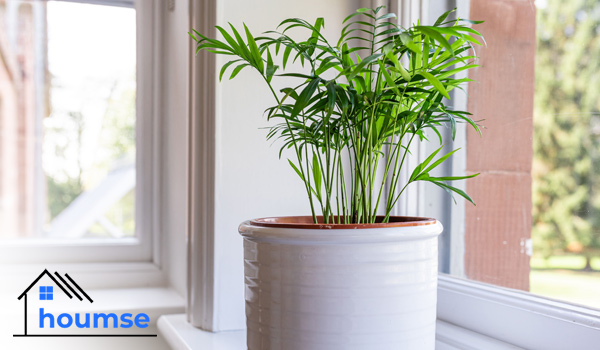
This is one of the super popular houseplants for beginners in interior design due to its lively, showy nature. It is a single-stemmed plant with narrow, elongated leaves, which make it very attractive. It is native to Mexico, so it is perfect to grow indoors.
Like some good house plants with easy care, the Parlor Palm requires slightly more attention. Whether growing indoors or outdoors, this specie does not tolerate direct sun and its leaves will turn yellow. It is best to place it in a spot with partial shade. It is also not resistant to cold and excess watering. However, it appreciates humidity, so it is a good idea to spray its leaves from time to time, especially in summer.
Chinese Money Plant (Pilea peperomioides)
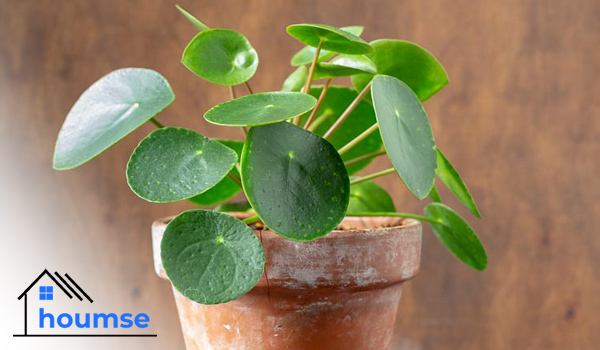
Chinese Money Plant is one of the good house plants that has conquered Pinterest boards and Instagram posts. Native to southern China, this specimen is characterized by its round, fleshy leaves with an intense green color and a yellow dot (almost) in the center. This indoor plant is resistant, but also very decorative.
Simply place it in a bright place without direct sunlight (which could burn its leaves), avoid temperatures below 50 ºF as well as sources of heat or drafts, let its soil dry between irrigations, and you will have the most grateful, charming plant ever!
Money Tree Plant (Pachira aquatica)
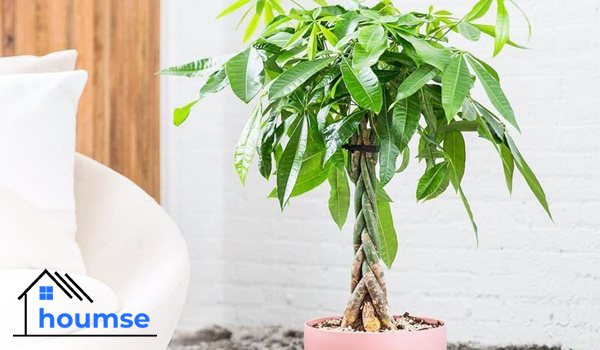
The Money Tree Plant is an indoor plant native to tropical America, one of the elegant yet easy indoor plants characterized by its usual braiding on the trunk with which it is usually sold.
The braided trunks of the Pachira aquatica are a consequence of the simultaneous cultivation of three little plants that, as their stems grow, are braided and these grow hierarchically, thickening the base of the stem and leaving the upper part finer. It should be placed next to the window so that insufficient light does not cause thin and very elongated stems.
Spider Plant (Chlorophytum comosum)
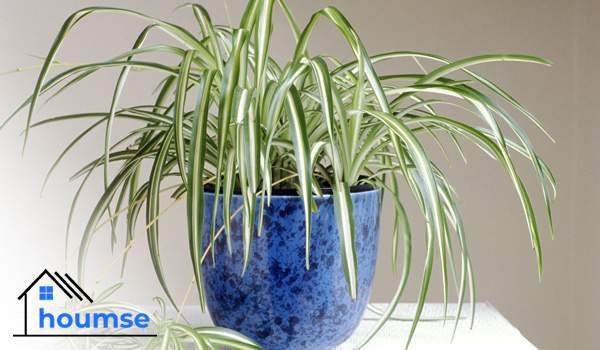
This is one of the famous good house plants featuring long, hanging leaves with amazing foliage. Spider Plant is very easy to care for, and ideal for decorating bathrooms or kitchens as they love humidity. It is also perfect for the little ones to learn about plants since they reproduce very easily and quickly.
Although it appreciates bright locations, it is better not to place it in direct sunlight to avoid burning the leaves. It also tolerates spots with shade or partial shade. It would be smart to spray it from time to time (especially in summer) too since it loves humidity.
Croton (Codiaeum Variegatum var. Pictum)
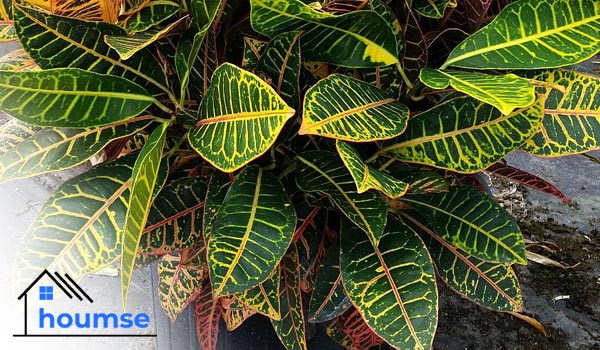
This plant stands out among other easy indoor plants for beginners due to the attractive variety of bright colors that its leaves have (ranging from yellow and orange to reddish tones). It can reach 3 feet in height, and thanks to its upright shape and incredible foliage, it will be the focal point wherever you put it.
Like the Pachira aquatica, it should be placed near a window avoiding direct sunlight as it could spoil its beautiful leaves. Dry environments can cause the lower leaves to drop, which will affect croton’s attractiveness. So, it is good to spray them regularly.
Cissus (Parthenocissus striata)
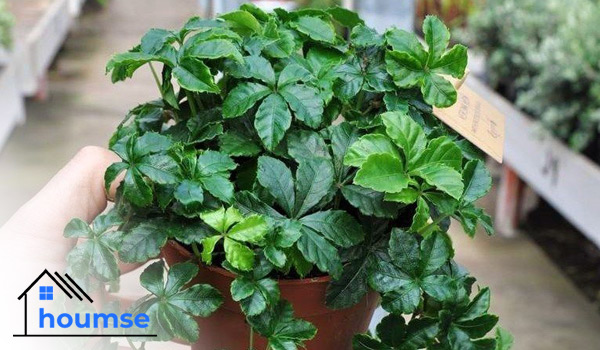
Parthenocissus striata is not simply one of the good house plants for novice gardeners. This climbing plant is known for being almost “indestructible”.
Perfect for hanging baskets, it is better to be located near a spot with abundant light. However, it can grow and show off in corners with little light too. Additionally, it tolerates dry environments, so it does not require regular spraying.
Rosary Vine (Senecio rowleyanus)
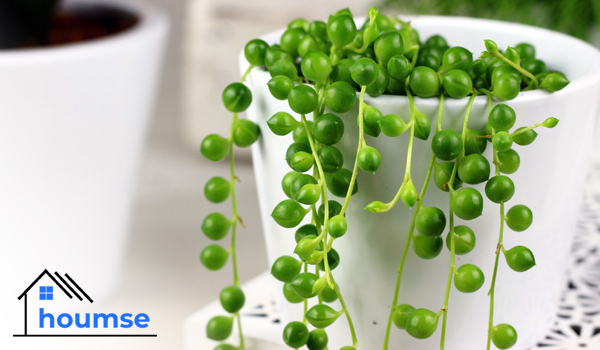
In addition to being perfect for beginners due to its simple care, Rosary Vine has adorable hanging stems that decorate any corner of your house.
This succulent thrives in very bright spaces with a couple of hours of direct sunlight per day. Check the potting mix between waterings, apply a succulent fertilizer and simply enjoy one of the most unique beginner plants for indoor.
Prayer Plant (Maranta leuconeura)
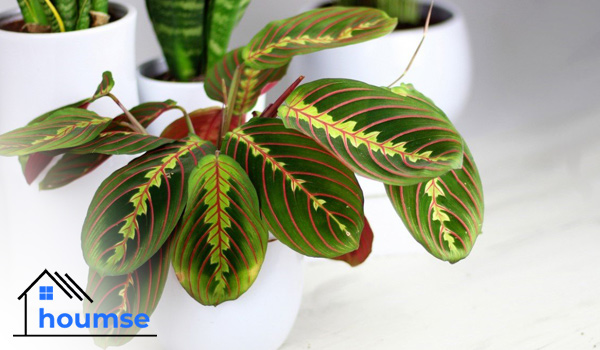
This specie gets its name from an interesting habit of its leaves, which tend to close at night slightly. It needs a lot of (indirect) light to show off its vibrant colors, both leaves and veins. Prayer Plant also prefers peaty soil mixes and humidity, so it will be convenient to spray its leaves in summer.
Place a plate with pebbles under the pot, remove the excess water after watering, and voila! You have the most amazing plant with minimum care.
Ferns (Pteridopsida)
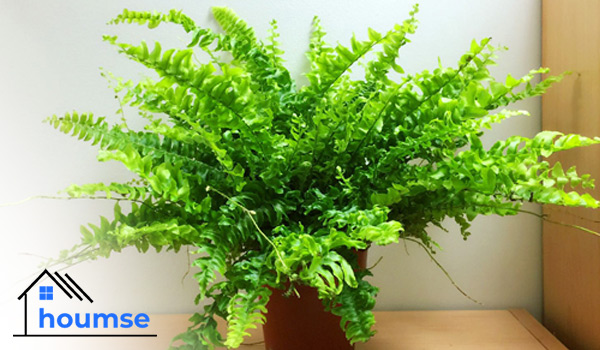
You cannot look for top houseplants for beginners and miss beautiful Ferns. Easy to care for and highly decorative, ferns have been all the rage for as long as we can remember. They are very resistant and do not require much maintenance.
It is ideal to place them in a spot with partial shade away from direct sunlight. They like humidity, although excessive watering can cause root rot and yellow leaves. So, ensure correct irrigation and proper drainage, these are all the care a fern needs.
African Violet (Saintpaulia)

Famous for being tough, the African violet (Saintpaulia) is among flowering houseplants for beginners that offer ultimate elegance.
It needs little light, although, with sufficient light, it will bloom throughout the year. It can be found not only in purple, but also in blue, pink, red, or multicolor varieties. It is indeed hardy, but it does not tolerate temperatures below 50 ºF (60 ºF to 70 ºF is the best). Provide them with moderate watering and no common problem would bother you.
Crown of Thorns (Euphorbia milii)
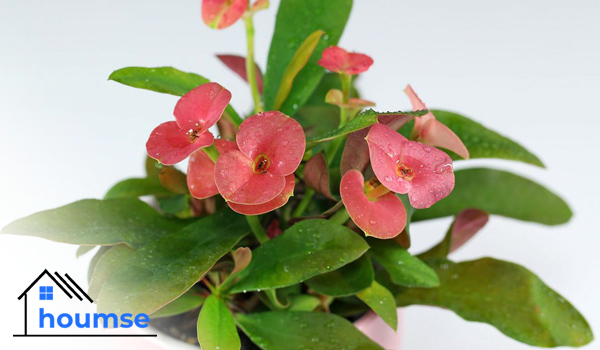
There are other flowering houseplants for beginners too, including Euphorbia milii, which is a succulent characterized by its thorned stems and gorgeous blooms throughout the year (that are red in common varieties).
This plant grows well indoors near a window with plenty of natural light and no drafts. Irrigation must be moderate and, in winter, practically none. In fact, this species is particularly resistant to drought and can live for months without water.
Calathea Plant
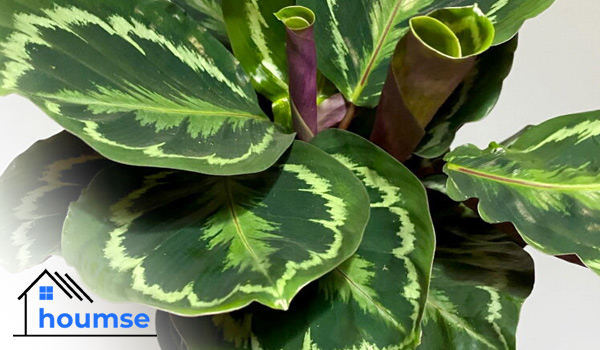
Looking for tall houseplants for beginners? Calathea is an option that is really hard to pass. What is most striking about this plant are its leaves: a bluish-green color on the surface, while the underside is deep purple. In addition, they unfold during the day and roll up again at night.
Calatheas do not tolerate temperatures below 60 ºF, they appreciate the exposure to moderate indirect light as well as humidity. It is recommended to spray them regularly or place a plate with pebbles and water under the pot. And that would be all that this eye-catching species need.
Peperomia Raindrop (Peperomia polybotrya)
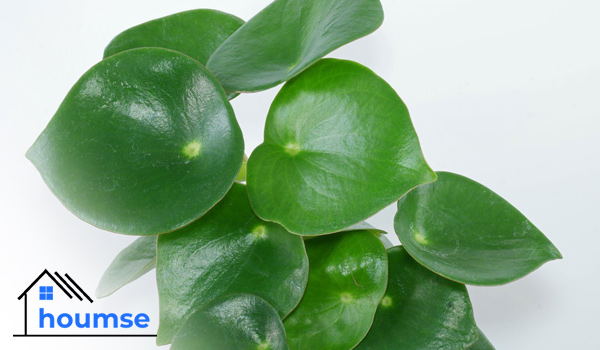
This variety is characterized by its large, deep green, and fleshy leaves shaped like a heart. In good house plants, this specimen is highly ornamental, and, with some simple care, it will brighten your room
Like succulents, it accumulates water in its leaves, which gives it a fleshy appearance. It needs indirect exposure to the sun and is quite sensitive to cold. Its irrigation is moderate and, the most appropriate is to check the humidity of the soil beforehand to make sure that they need water.
You may also want to know that providing humidity (either by spraying it or placing a plate with water and pebbles under it) boosts its growth greatly.
Cast Iron Plant (Aspidistra elatior)

The aspidistra is the perfect plant for inexperienced gardeners because it grows in any corner of your house and does not have common pest problems. In addition, it is one of the easy indoor plants that are fine with little light and does not love direct sunlight. For a fancier effect, you can prune some leaves and lighten the plant.
Bush Lily (Clivia miniata)
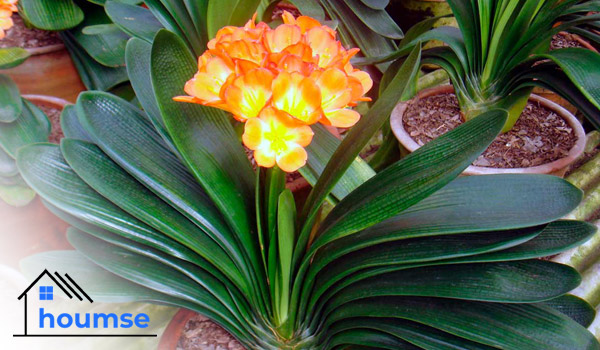
Clivia miniata is another one of the flowering houseplants for beginners, which is hardy and easy to care for. It offers showy orange or yellow blooms once a year -generally in spring- and wide, thick leaves with attractive dark green.
It does not need a lot of light to thrive, but it always appreciates being in bright rooms without direct sunlight. Irrigate moderately and you will have a happy and healthy plant.
Cacti and Succulents
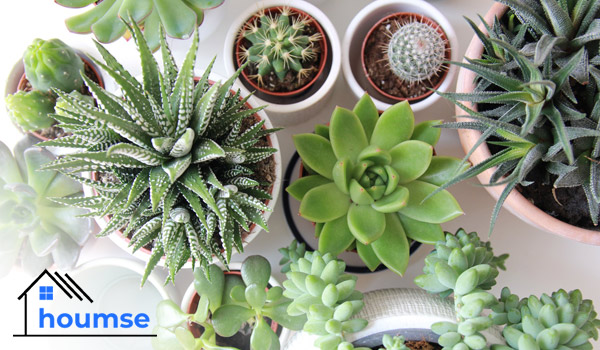
The term succulent comes from “succus”, a Greek word meaning water. The name comes from the ability of these good house plants to retain water in their leaves, roots, and stems that allows them to survive non-ideal conditions.
To keep succulents in perfect condition, place them in locations with abundant light without direct sunlight. It is also important that the soil is not excessively wet, and the roots are not waterlogged. Cacti belong to the succulent family too. They accumulate water to adapt to the habitat and transform their leaves into thorns to protect themselves from animals.
These easy indoor plants need several hours of light a day, no drafts, and moderate watering depending on the season as well as the weather. In winter they almost need no water, every 10 or 12 days in spring, and every 4 or 8 days on hot days (again, depending on the weather in your area).
- In this post:
- Pothos (Epipremnum aureum)
- Cordyline (Cordyline terminalis)
- Peace Lily (Spathiphyllum)
- Mother-In-Law’s Tongue (Dracaena trifasciata)
- Jade Plant (Crassula ovata)
- Red Anthurium (Anthurium andraeanum)
- Fiddle Leaf Fig (Ficus lyrata)
- Adam’s Rib (Monstera deliciosa)
- Aloe vera
- Christmas Cactus (Schlumbergera)
- Elephant’s Foot (Yucca elephantipes)
- Lucky Bamboo (Dracaena Sanderiana)
- Umbrella Plant (Schefflera)
- ZZ Plant (Zamioculca zamiifolia)
- Parlor Palm (Chamaedorea elegans)
- Chinese Money Plant (Pilea peperomioides)
- Money Tree Plant (Pachira aquatica)
- Spider Plant (Chlorophytum comosum)
- Croton (Codiaeum Variegatum var. Pictum)
- Cissus (Parthenocissus striata)
- Rosary Vine (Senecio rowleyanus)
- Prayer Plant (Maranta leuconeura)
- Ferns (Pteridopsida)
- African Violet (Saintpaulia)
- Crown of Thorns (Euphorbia milii)
- Calathea Plant
- Peperomia Raindrop (Peperomia polybotrya)
- Cast Iron Plant (Aspidistra elatior)
- Bush Lily (Clivia miniata)
- Cacti and Succulents



